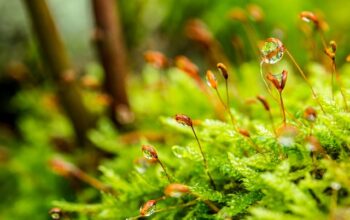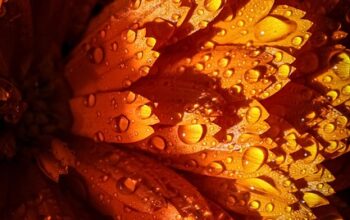Basement waterproofing is essential for protecting your home from moisture damage, preventing structural issues, and preserving its value. By understanding the causes of wet basements (e.g., poor drainage, cracks) and implementing long-term strategies like proper drainage, sealing cracks with waterproof materials, and using eco-friendly products, homeowners can create a robust barrier against groundwater intrusion. Short-term solutions like dehumidifiers offer immediate relief until permanent fixes are in place, ensuring peace of mind and a dry, healthy living space.
Struggling with a wet basement? You’re not alone. It’s a common issue, but luckily, there are effective solutions for basement waterproofing. This comprehensive guide breaks down everything you need to know, from understanding the root causes to implementing long-term prevention strategies. Discover short-term fixes for immediate relief and explore green, eco-friendly approaches that safeguard your space without harmful chemicals. Take control of your dry basement today!
- Understanding Basement Waterproofing: The First Line of Defense
- Common Causes of Wet Basements and How to Identify Them
- Effective Short-Term Solutions for Immediate Relief
- Long-Term Strategies: Preventing Water Intrusion Completely
- Green and Eco-Friendly Approaches to Basement Waterproofing
Understanding Basement Waterproofing: The First Line of Defense
Basement waterproofing is a critical component in ensuring your home’s structural integrity and protecting against costly damage. Understanding the fundamentals of basement waterproofing serves as the first line of defense against moisture intrusion. It involves creating a barrier between your basement and the ground water, preventing seepage through cracks, seams, and other potential entry points. This initial step is crucial not just for maintaining the beauty of your home but also for its longevity.
Effective basement waterproofing strategies include using high-quality materials like waterproof membranes, coatings, and seals. These products are designed to resist water pressure and block out moisture at its source. By addressing basement waterproofing proactively, homeowners can avoid common issues such as mold growth, musty odors, and structural damage caused by persistent water problems.
Common Causes of Wet Basements and How to Identify Them
Wet basements can be a common and frustrating issue for many homeowners. Understanding the root causes is the first step in finding effective solutions, such as basement waterproofing. Common causes include a variety of factors like poor drainage around the foundation, cracks or gaps in the walls or floor that allow water seepage, and improper slop or grading leading to water collecting against the basement walls.
Identifying these issues is crucial for successful basement waterproofing. Look for signs like persistent water stains on walls and ceilings, musty odours, or even visible puddles or dripping water. If you notice any of these indicators, further inspection may be needed. Inspect for cracks in concrete, especially around windows and doors, as well as gaps where pipes and wires enter the basement. Check the exterior drainage to ensure water is flowing away from the foundation rather than pooling around it.
Effective Short-Term Solutions for Immediate Relief
If you’re experiencing a wet basement, there are several effective short-term solutions for immediate relief. One common and quick fix is installing a dehumidity system or dehumidifier. These devices help reduce moisture levels in the air, making the space more comfortable and preventing further water damage. By removing excess humidity, you can temporarily alleviate the issue until a long-term basement waterproofing solution is implemented.
Another short-term measure involves sealing any visible cracks or gaps in walls and floors. These entry points allow water to seep into your basement, so sealing them with appropriate materials like caulk or epoxy will create a barrier against moisture intrusion. While this isn’t a permanent fix, it provides an instant solution to keep water out until you can address the underlying waterproofing issues.
Long-Term Strategies: Preventing Water Intrusion Completely
To prevent water intrusion completely and implement effective long-term strategies for basement waterproofing, addressing the root causes is essential. Start by ensuring proper drainage around your home, directing rainwater away from your foundation with well-maintained gutters, downspouts, and landscaping that slopes away from your structure. Cracks in foundations or floor joints should be sealed with high-quality waterproof materials to prevent seepage.
Regular inspection and maintenance are key. Look for signs of water damage, such as mold growth, peeling paint, or warped floors, which may indicate existing issues. Promptly repairing any leaks from pipes, appliances, or windows can stop minor problems from escalating into costly basement waterproofing nightmares. Consider investing in a humidifier to control moisture levels indoors, as high humidity can exacerbate water intrusion issues.
Green and Eco-Friendly Approaches to Basement Waterproofing
In recent years, there’s been a growing emphasis on green and eco-friendly solutions for basement waterproofing, driven by a conscious effort to minimize environmental impact. Traditional methods often rely on chemicals and synthetic materials that can leach into groundwater or contribute to indoor air pollution. In contrast, eco-conscious approaches prioritize natural, sustainable alternatives that not only protect against water intrusion but also promote a healthier living environment.
One such solution is the use of plant-based membranes and coatings derived from renewable resources like cornstarch or bio-resins. These products offer excellent waterproofing properties while being non-toxic and biodegradable, reducing potential harm to local ecosystems and indoor air quality. Additionally, green basement waterproofing methods often integrate with energy-efficient practices, such as proper ventilation systems and moisture absorbers made from natural materials, creating a more sustainable and overall healthier living space.




